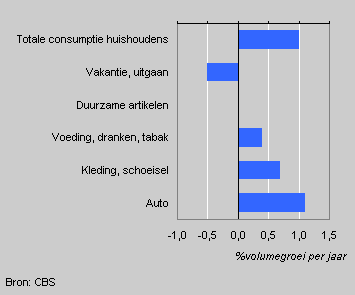Less luxury in economic pinch

Consumer confidence has not been as low as it currently is in two decades. Consumers are uncertain about their financial future. They are reticent when it comes to making major purchases. When asked how they would economize when their income diminishes, it turns out that luxury items, holidays, and nights out are major candidates for cuts.
No economizing on the car
In twenty years time the candidates for cuts have changed quite dramatically. The most striking change is the number of consumers who indicated that they would first economize on the car. In 1982 one consumer in four indicated they would spend less money on the car in an economic pinch. In 1993 their number was reduced to barely one in seven, and in 2003 to one in eleven.
Holidays, evenings out, and durable goods such as household appliances and home furnishings are more likely candidates for economizing.
Items to economize on when net income diminishes

Cutting expenditure on holidays and nights out
It turns out that there is an above average decrease in the consumption growth of those goods that are the first to be cut. In 1996–2000 the volume of consumption fell by an average of 4 percent a year. Then the economy started to slow down, and the growth rate in consumption fell to an average of 1 percent. The growth rate in the consumption of food, beverages and tobacco, clothing and shoes and cars also fell by a factor of four.
There was a much more serious decrease in the growth rate of consumer expenditure on holidays, nights out and durable goods. There was actually negative growth in the expenditure on holidays and nights out. The growth rate in consumption was hardest hit in precisely in those categories where consumers would cut first.
Expenditure by category

Bastiaan Rooijakkers, Gert Buiten